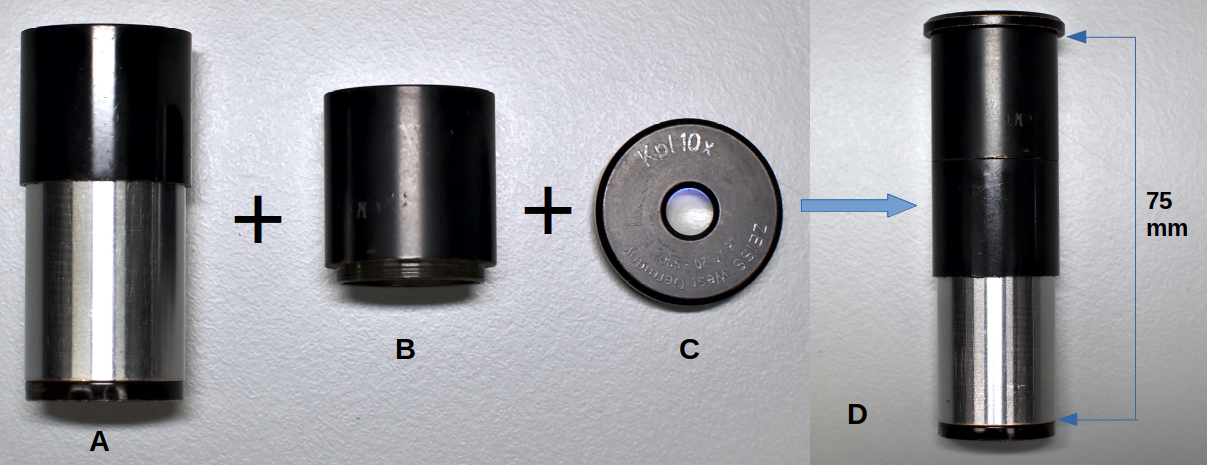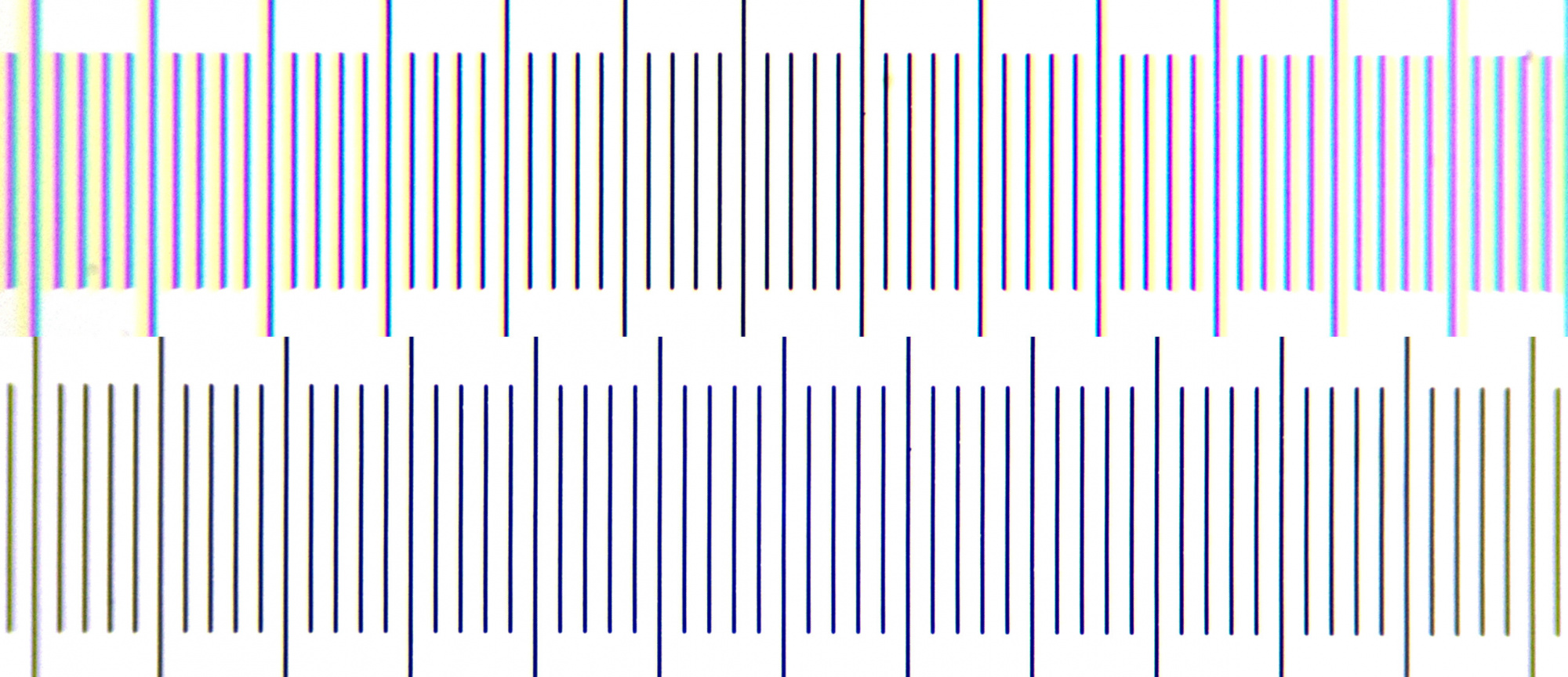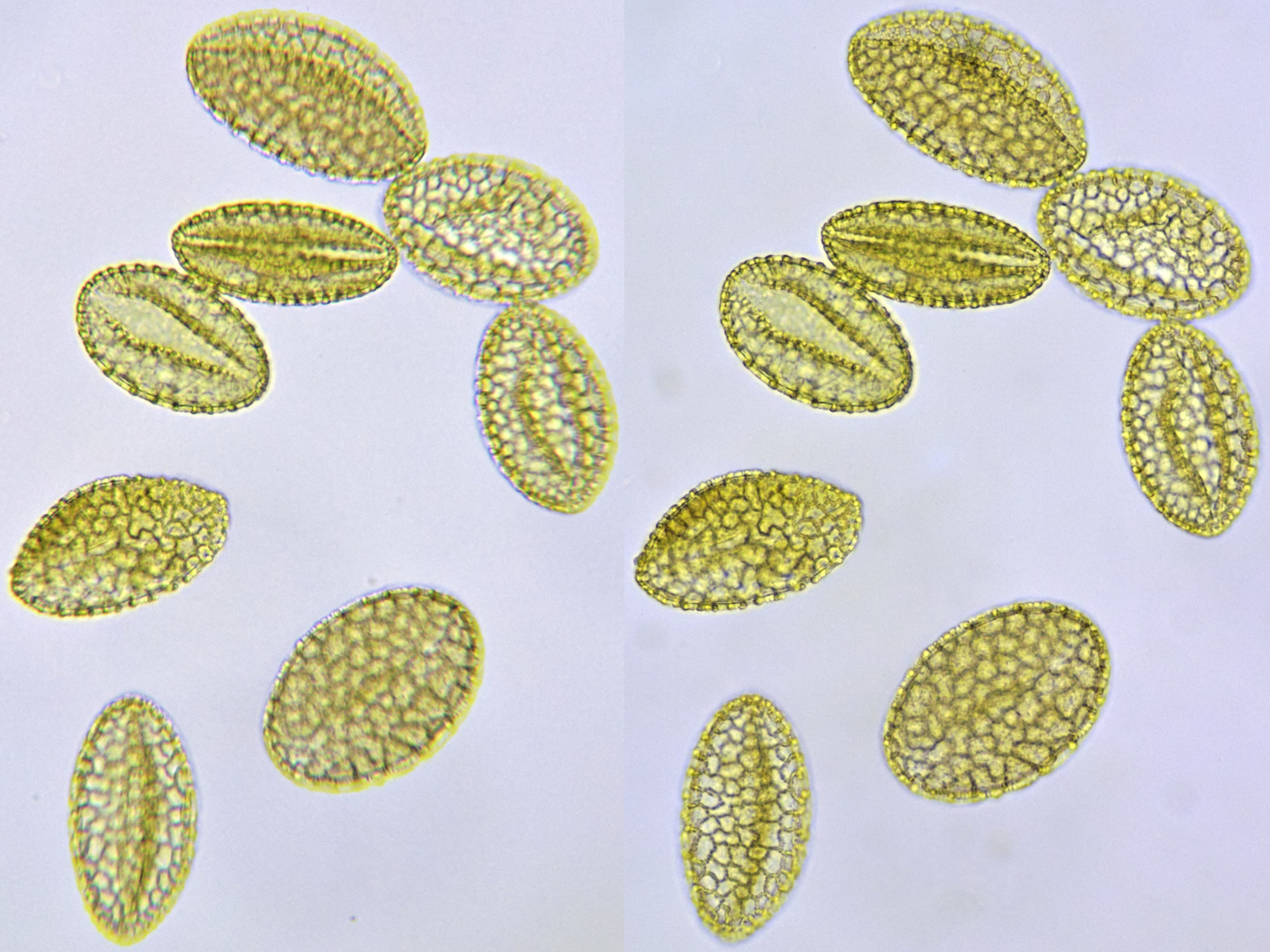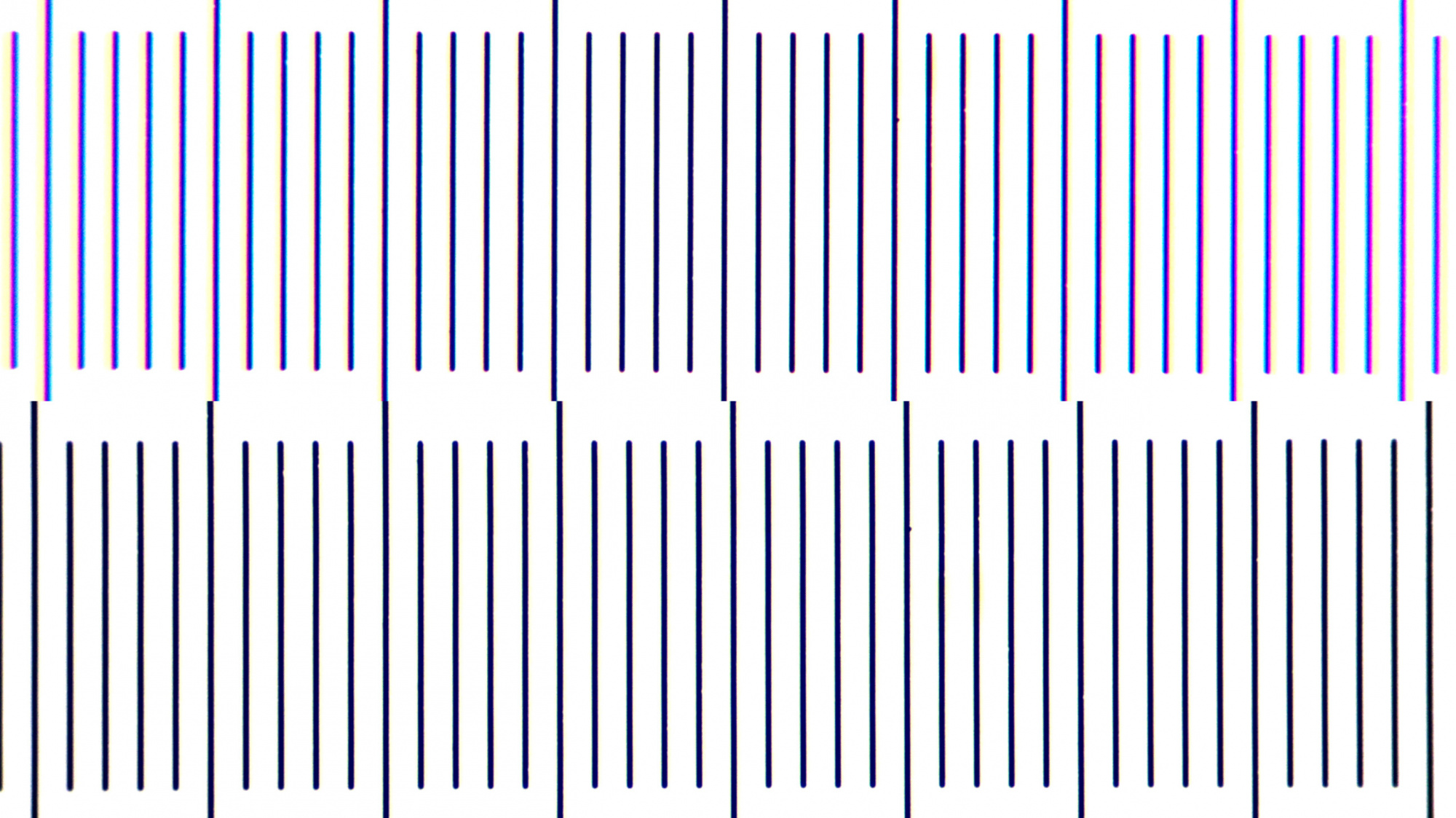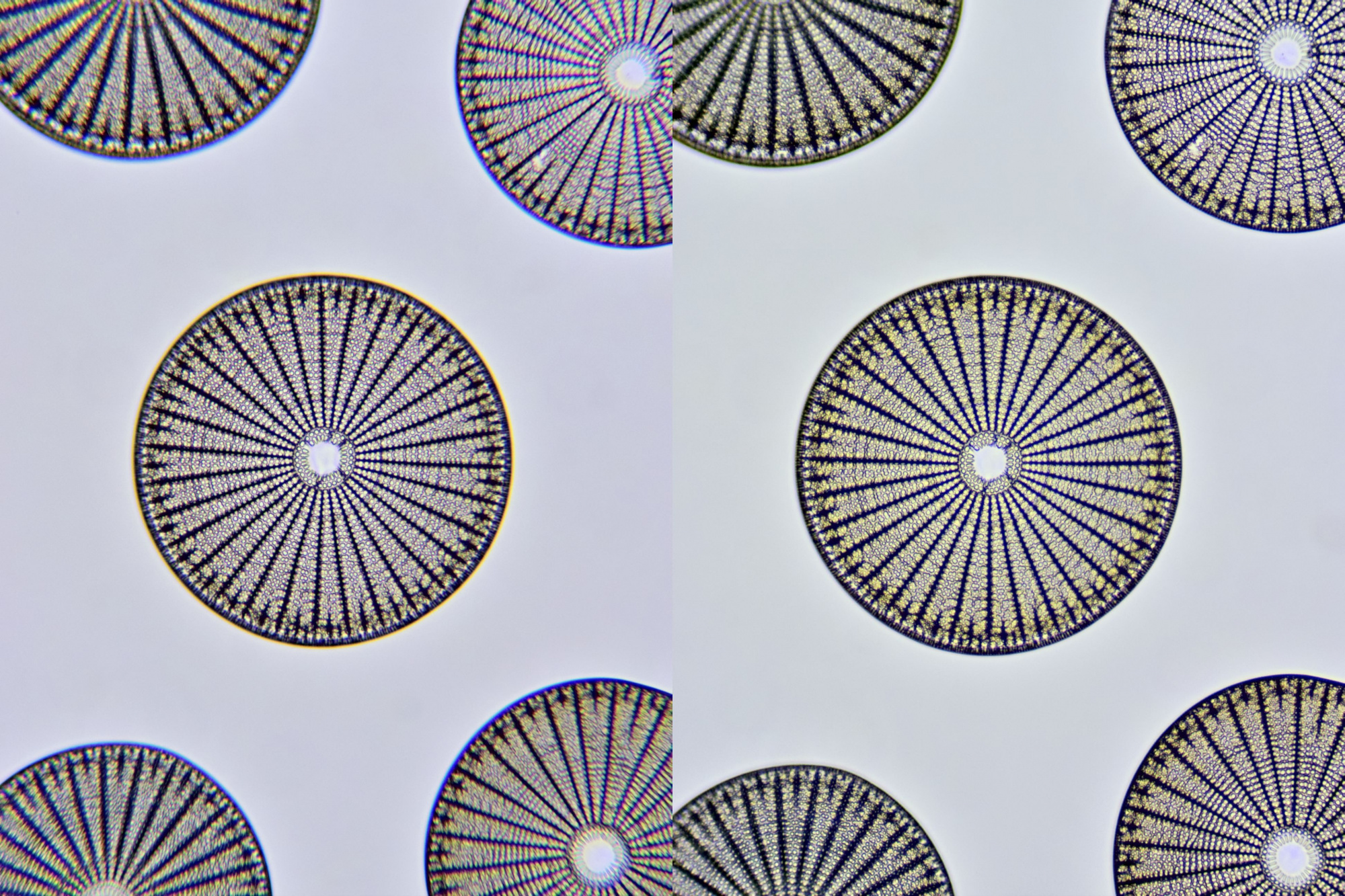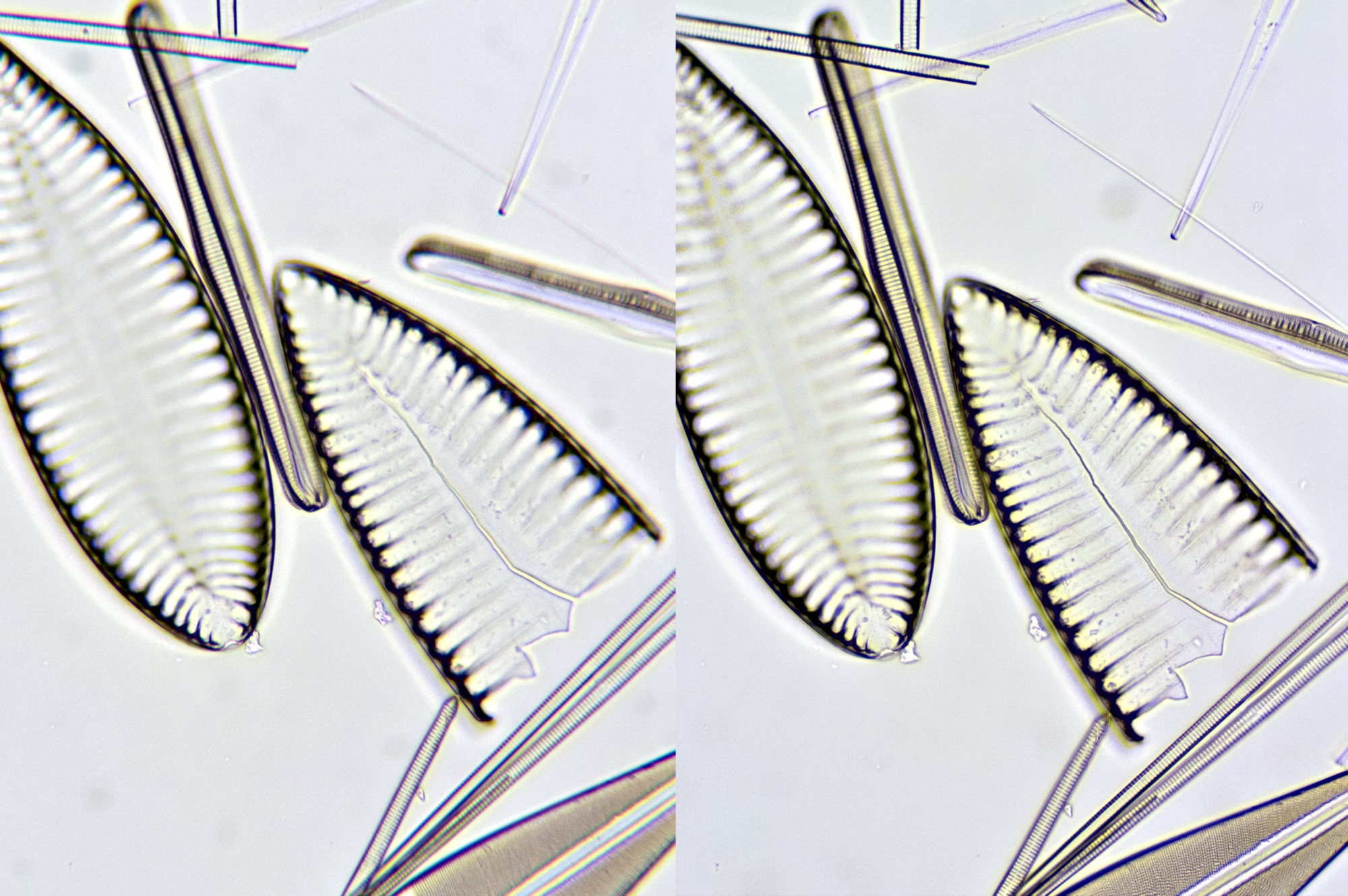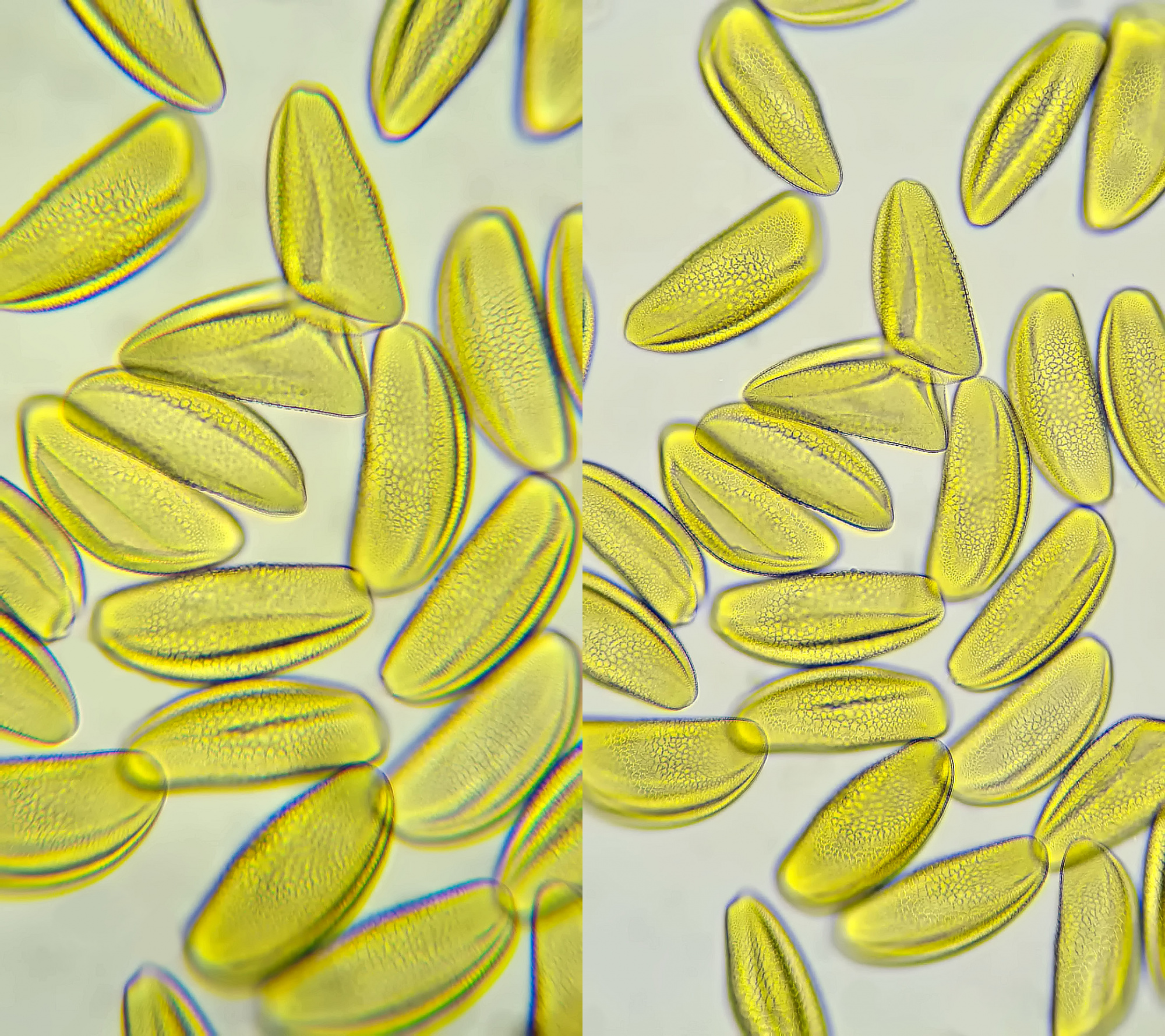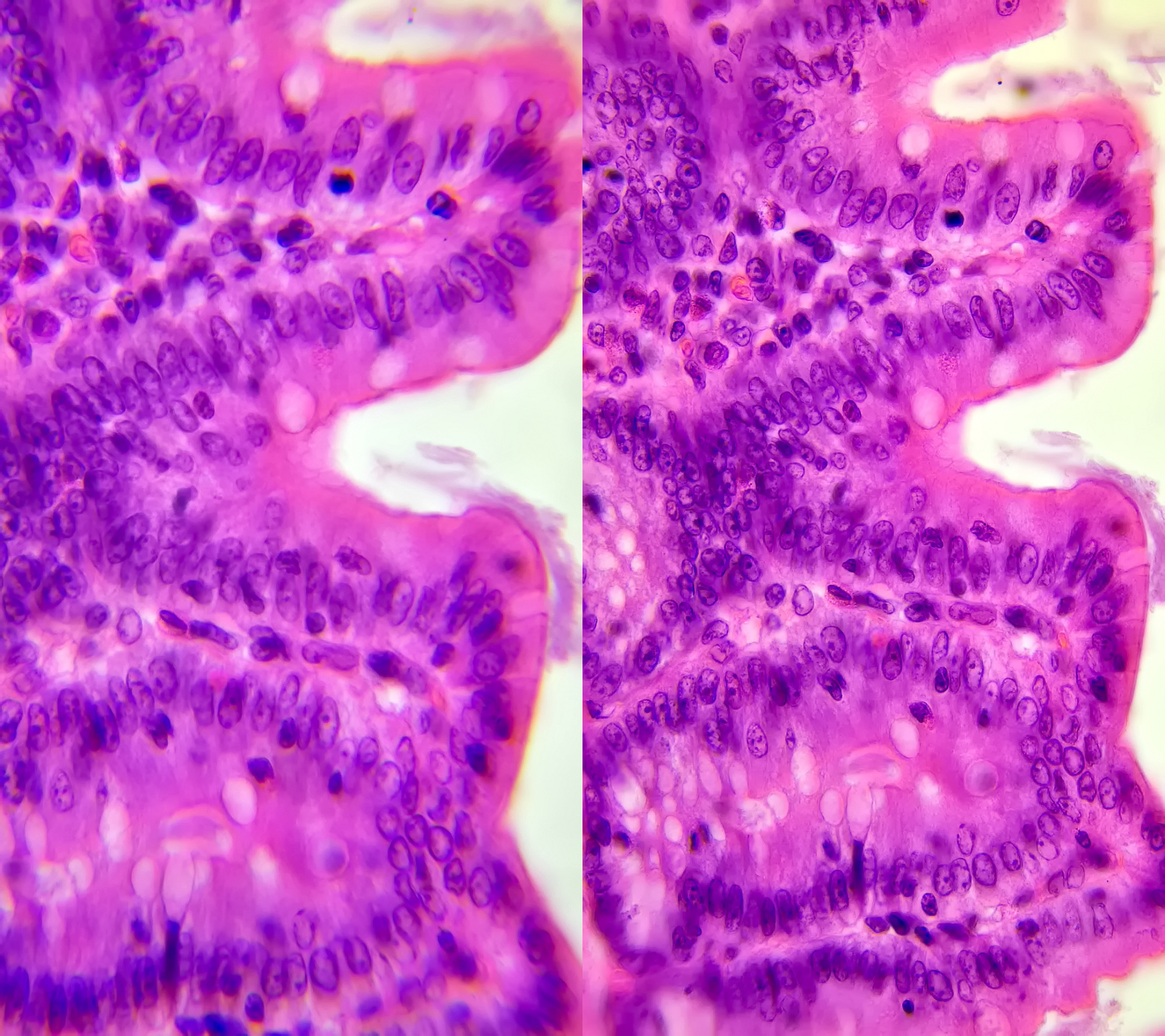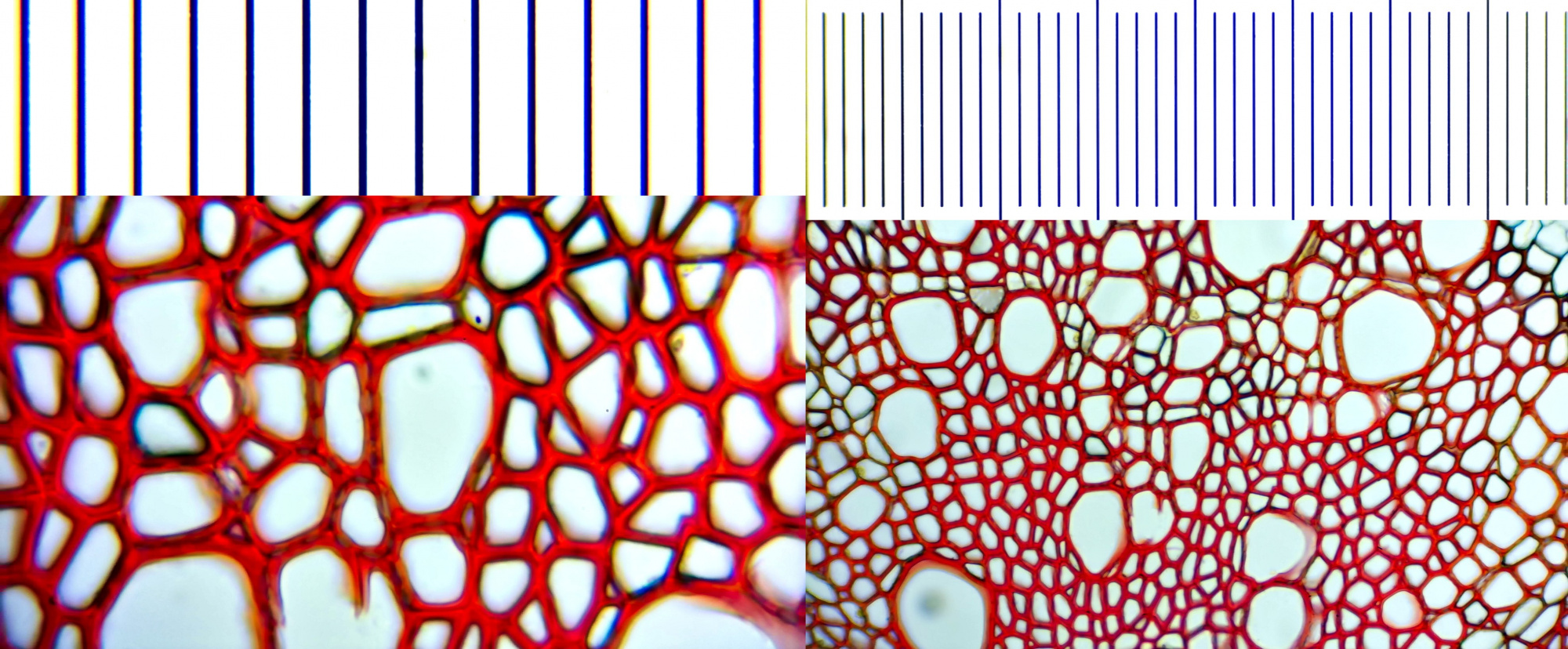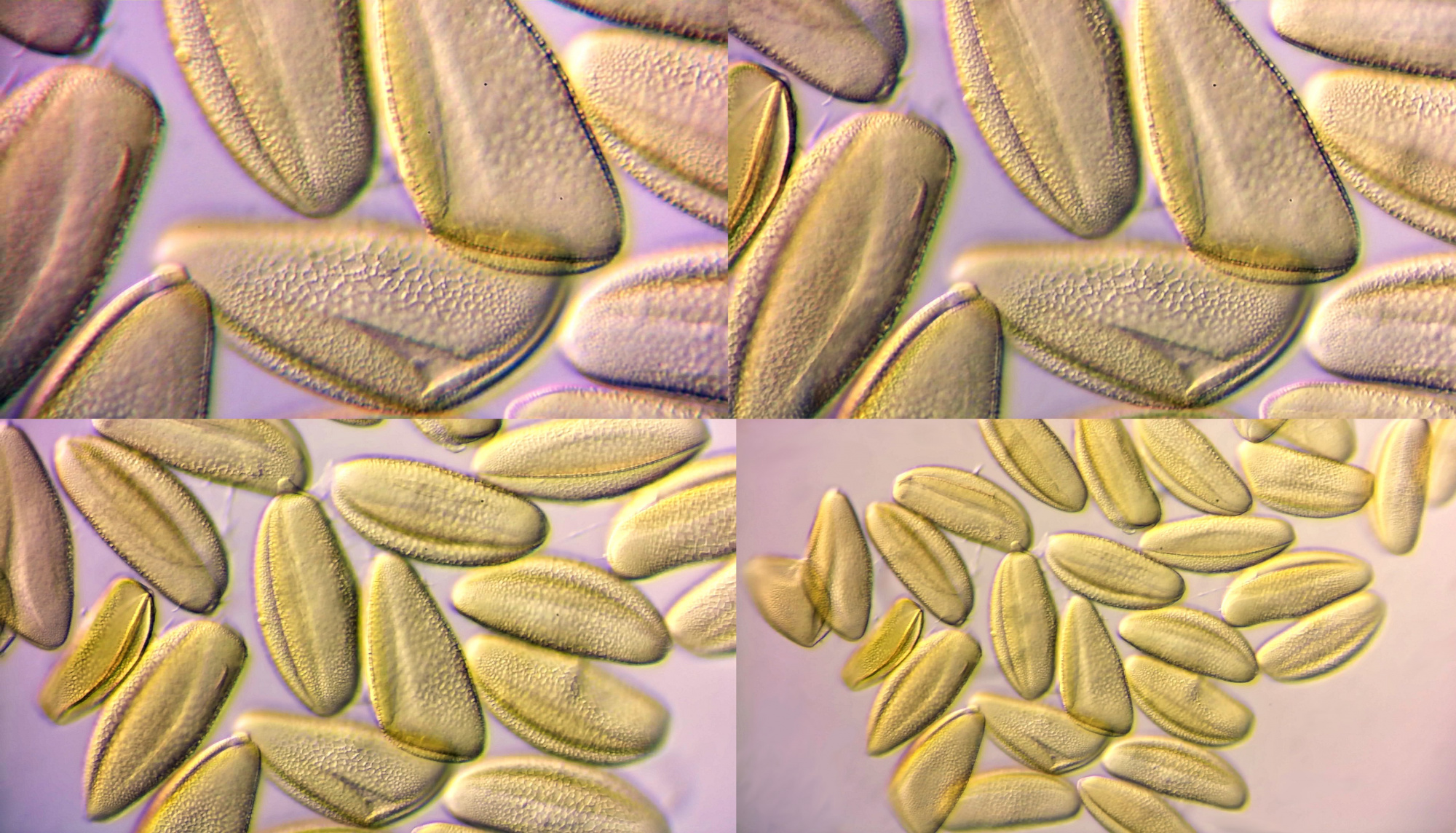Introduction
Special microscope cameras usually have a small sensor and to be able to capture a reasonable part of the microscopic field of view, a reduction lens is used. This is an eyepiece with a built-in optical element that reduces the image so that a bigger part of the field of view is projected onto the sensor. Typical values for such a lens are for example 0.37x, 0.5x or 0.75x. The reducing eyepiece is screwed onto the camera body and the camera can then be placed in the tube of the microscope. These types of reduction eyepieces have no corrective properties. Depending on the quality of the camera, this principle works well with microscopes with infinite optics, because here, the image is already corrected by the tube lens. However, with microscopes with finite optics, i.e. with a mechanical tube length of usually 160 mm or 170 mm, a problem arises. The residual errors in the image formed by the objective are not corrected when using these types of cameras. In microscopes with finite optics, the corrections are done with compensating eyepieces. Because the reduction eyepiece of the camera takes the place of a compensating eyepiece, distortions and chromatic aberrations occur in the image, especially at the edges. A possible solution to this problem is the use of hybrid eyepieces, see also: 'microphotography with hybrid eyepieces'. With a hybrid eyepiece, the image of the objective is simultaneously reduced in size and corrected. For the tests in this section I tried two different c-mount cameras, a ToupTek 5 MP camera and a Hayear 14 MP camera. I also tested the Bresser MikrOkular Full HD eyepiece camera. All these cameras were tested in combination with hybrid eyepieces for Zeiss. The distance from the sensor to the hybrid eyepiece was adjusted so that the image from the camera was exactly parfocal with the visual image. To be able to use the camera with hybrid eyepieces, you have to improvise a bit. The camera must be placed onto something and the distance from the camera to the eyepiece must be freely adjustable. In addition, the camera must be centered. I used the Ihagee adapter as a basis for this.
For Zeiss objectives I tested hybrid eyepiece C5-ZW5-Kpl10. The eyepiece is composed of the parts of 3 different eyepieces. A: Zeiss C5x eyepiece without eye lens B: The upper barrel from a Zeiss-Winkel 5x eyepiece, this contains a screw thread. C: Eye lens of Zeiss Kpl10x eyepiece. D: Hybrid eyepiece in which the distance between eye lens and field lens is 75 mm. I also tested a second hybrid eyepiece in which the C5x part was replaced by a C8x eyepiece: C8-ZW5-Kpl10.
Touptek 5 MP camera
The model used has the number UCMOS5100KPA. This camera has a 1/2.5 inch sensor. I used the camera with two different reduction lenses, 0.37x and 0.5x and compared the results with two different hybrid eyepieces for Zeiss objectives: C5-ZW5-Kpl10 and C8-ZW5-Kpl10. With the latter, the C5x eyepiece is replaced by a Zeiss C8x eyepiece. There is a very slight vignetting when using the 0.37x reducing lens as well as the hybrid eyepiece C5-ZW5-Kpl10. To be able to view the images on the computer I used the ToupLite software.
Stage micrometer photographed with the Touptek camera and Carl Zeiss Plan 25/0.45. Upper image: reduction lens 0.37x. Lower image: hybrid eyepiece C5-ZW5-Kpl10. The top photo clearly shows the chromatic aberration that occurs because no correction took place.
Pollen of a lily photographed with Touptek camera and Carl Zeiss 40/0.65. Left: reducion lens 0.37x. Right: hybrid eyepiece C5-ZW5-Kpl10.
Stage micrometer photographed with the Touptek camera and Carl Zeiss Plan 25/0.45. Above: reduction lens 0.5x. Below: hybrid eyepiece C8-ZW5-Kpl10. Again, the top photo clearly shows chromatic aberration.
Arachnoidiscus, photographed with Touptek camera and Carl Zeiss 25/0.45. Left: reduction lens 0.5x. Right: hybrid eyepiece C8-ZW5-Kpl10.
Diatoms photographed with Touptek camera and Carl Zeiss 40/0.65. Left: reduction lens 0.5x. Right: hybrid eyepiece C8-ZW5-Kpl10.
Hayear 14 MP camera
The sensor of this camera has a size of 1/2.3 inch. I compared the results of the accompanying 0.4x reduction lens with hybrid eyepiece C5-ZW5-Kpl10. A slightly larger portion of the field of view was photographed with the hybrid eyepiece. I couldn't find any camera-specific software that worked under Linux, as I'm not a Windows user. I used the VLC program to view the images on the computer. In terms of quality, I found this camera not as good as the Touptek. But because I haven't been able to use the accompanying software, I'm not sure I used the camera's full resolution. In any case, even with this quality, the difference between the reduction lens and the hybrid eyepiece is clearly visible in the images. With this camera I found that the 0.4x eyepiece caused a considerable deterioration of the image.
Pollen from Clivia miniata photographed with the Hayhear camera and Carl Zeiss 40/0.65. Left: reduction lens 0.4x. Right: hybrid eyepiece C5-ZW5-Kpl10.
Histological slide photographed with the Hayhear camera and Carl Zeiss Neofluar 63/1.25. Left: reduction lens 0.4x. Right: hybrid eyepiece C5-ZW5-Kpl10.
Arachnoidiscus, photographed with the Hayhear camera and Carl Zeiss 40/0.65. Left: reduction lens 0.4x. Right: hybrid eyepiece C5-ZW5-Kpl10.
BRESSER MikrOkular Full HD eyepiece camera
I have already described the Bresser MikrOkular Full HD eyepiece camera in the section 'Micro photography'. This camera is one of the cheapest eyepiece cameras available. You should therefore not expect a great quality. Nevertheless, this camera is fairly usable and reasonable images can be obtained, especially in combination with hybrid eyepieces.
Because no compensating optics are present in these types of cameras, chromatic aberration can occur in microscopes with finite optics. The extent to which this is visible depends on, among other things, the type of slide and the lighting.The following image shows the chromatic aberration that can occur when this camera is used with higher power objectives calculated for a finite mechanical tube length. Here, a Zeiss Plan 40/0.65 (160 mm mechanical tubelenght) was used. To improve the image quality with these types of objectives, compensating optics is needed between the objective and camera. That can be a compensating eyepiece or a projective. In this case, hybrid eyepiece C5-ZW5-Kpl10 was used. With the hybrid eyepiece it was also possible to capture a much larger part of the field of view.
Stage micrometer and a stained slide from a root section photographed with the BRESSER MikrOkular Full HD eyepiece camera and Zeiss Plan 40/0.65. On the left, the camera was placed into the photo tube without compensating optics. A clear chromatic aberration is visible at the edges of the images. On the right, hybrid eyepiece C5-ZW5-Kpl10 was used to project the image onto the sensor of the eyepiece camera. With the hybrid eyepiece, the chromatic aberration is corrected and a much larger part of the field of view is photographed.
The very small part of the field of view that is normally recorded with this camera can be annoying because the slightest shift of the stage causes the subject to be photographed to disappear from the viewfield. This is especially difficult at higher magnifications. By using different combinations of eyepieces, the size of the area to be photographed can be controlled to some extent as shown in the image below.
Pollen of Clivia miniata photographed in oblique lighting with Zeiss Plan 40/0.65 and the Bresser MikrOkular Full HD eyepiece camera. By using different hybrid eyepieces, the image was increasingly reduced and a larger part of the field of view was photographed. Top left: camera without hybrid eyepiece. Top right: hybrid eyepiece C5-Kpl10. Bottom left: hybrid eyepiece C8-ZW5-Kpl10. Bottom right: hybrid eyepiece C5-ZW5-Kpl10.
The videos recorded with the Bresser eyepiece camera can be of acceptable quality as the example below shows. Here too, a hybrid eyepiece was coupled to the camera.
Video of Trachelomonas in which the long flagellum is clearly visible. Here you can see the early stage where the cell wall is broken down so that the flagellate can be released for reproduction. A small piece of the cell wall has already been shed. Recorded with Bresser MikrOkular Full HD eyepiece camera in combination with hybrid eyepiece C5-ZW5-Kpl10 and Carl Zeiss Apo 40/1.0.
Conclusion
Hybrid eyepieces can be used satisfactory in combination with microscope cameras. By using different hybrid eyepieces, the portion of the field of view that is photographed can be adjusted to the size of the sensor. With hybrid eyepieces, a corrected image is projected onto the sensor. With reduction lenses, no correction takes place, which leads to aberrations in the image when using microscopes with finite optics.
